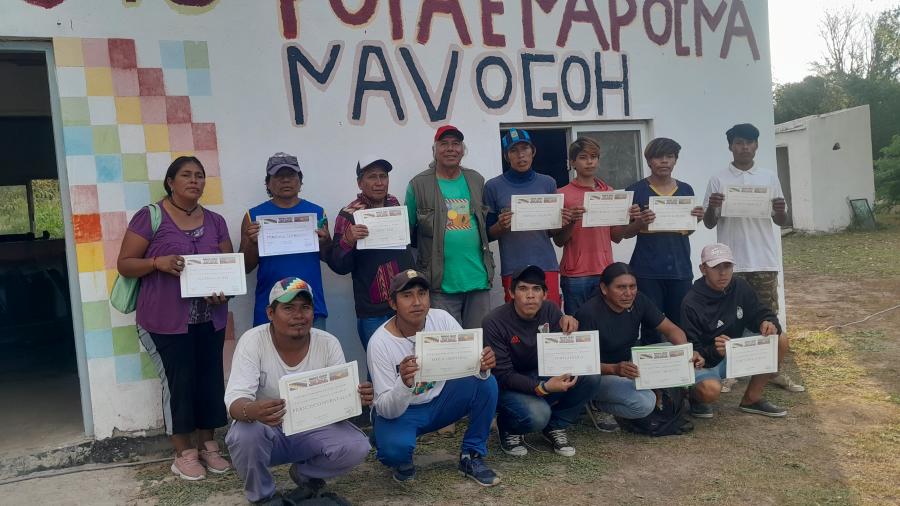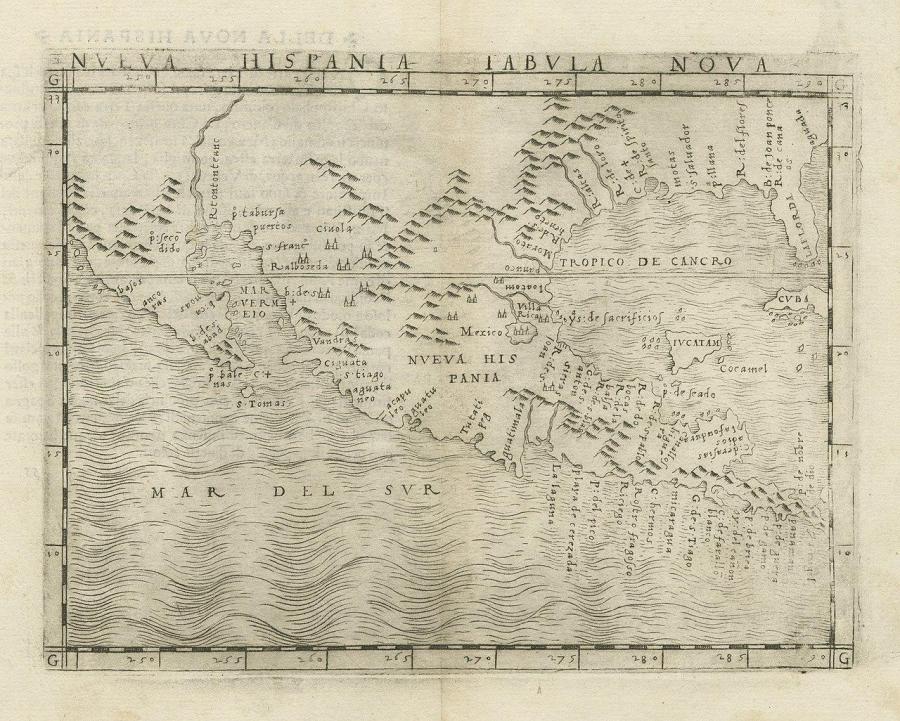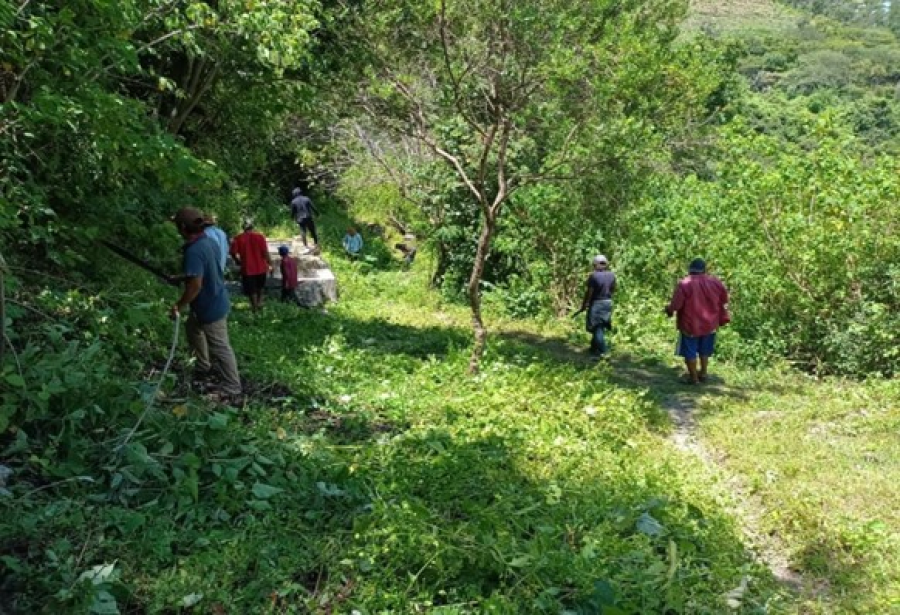Rising before the sun, Maía de la Cruz lies her infant into a blue shawl across her back, awakens her three other children, and hurries barefoot down a dew-moistened dirt path with her sons in rapid pursuit. Their 40-minute walk passes through the market to the zocalo at the center of San Cristobal, Mexico. For the next 14 hours, de la Cruz roams the plaza, selling wrist bands and belts to tourists.
De la Cruz is one of more than 100 street vendors in the nine city blocks surrounding the zocalo. A growing occupation for indigenous people in the region, vending is a de la Cruz family affair and the children are adept at selling chewing gun. Moreover, many households, especially those in which both parents are present, manufacture artisan goods they sell to tourists.
María de la Cruz and most of the other women vendors in the zocalo are expelled Chamulans: in Highland Chiapas, the only thing worse than being an indigenous street vendor is to have been expelled from one's village. After de la Cruz converted to Protestantism in 1984, the village leaders of San Juan Chamula expelled her and her husband from her paraje (hamlet) of Milpoleta. Sh sought refuge in Nueva Palestina, one of the "biblical cities" (pastor-controlled colonies) surrounding San Cristobal.
Expulsion is a tool of caciques, village leaders who ostracize people and force them to withdraw from community land. The caciques offer a variety of reasons for the expulsions; the most common are failure to follow tradition by not contributing to fiestas, refusing to drink alcohol, converting to Protestantism, and unsanctioned political activity. Some of the expelled are arrested or tortured, and all lose their sheep. Since 1974, over 20,000 indigenous people expelled for religious reasons have settled within the "cinturón de miseria" - belt of misery - around San Cristobal de las Casas, usually near the temple of their particular sect.
Barrios of Indians have surrounded San Cristobal, the cultural and commercial center of Highland Chiapas, since its founding in 1528. Today, in the 16 indignenous settlements that form of cinturón de miseria, the market activity of women is a major part of the economy.
ADAPTING TRADITION
The expansion of vending among the expelled is rooted as much in broader economic events as in the expulsions themselves. Even without expulsion and the consequent loss of property rights, few Chamulans were producing enough for their own needs by the mid-1970s, while cost men lived away from home for six to eight months a year, according to Robert Wasserstrom, a research affiliate of the Harvard Project. In the late 1970s, during both an economic crisis and an oil boom, many Chamulan men left wage labor on coffee plantations in Soconusco to do construction work. Unfortunately, Mexico's huge foreign debt, rising interest rates, capital flight, and falling oil prices led to a decline in construction projects, while Central American refugees seeking employment in Mexico prevented most Chamulan men from returning to the coffee groves. Meanwhile, tourism had expanded in the state of Chiapas in the wake of the development of Cancun and improved access to Mayan ruins nearby. As a result, even if men couldn't find jobs, women could sell crafts to tourists.
The deteriorating economic situation of the 1980s forced more and more women to devote their time and energy to crafts, like belt-and bracelet-making, that take little labor, using relatively inexpensive materials like cotton. The 1990s have further decreased family income, cornering the women in the informal sector of the economy.
Despite that, several anthropologists, including Diana Rus, June Nash, and Brenda Rosenbaum, have noted that the rise in women's wages has challenged the dominant position of men in households. Today, the expelled Chamulan vendors in San Cristobal tend to be the sole providers for their families. Most zocalo vendors head their households either as single parents, as does de la Cruz, or because their husbands are unemployed.
Taking charge is nothing new for Chamulan women; after all,men had often worked half the year in Soconusco, and married women had long controlled money they made from selling sheep and artisan works. Nevertheless, women have now gained even more economic independence, including the fact they don't have to account to a husband for money, how it will be spent, or who keeps what is left over. And since the expelled women pay for land rights in the cinturón de miseria out of their own earnings, the lots are in the woman's name, further challenging the gender balance of power in the household.
Women have come to view themselves as economically independent, and they encourage one another in this view. "It is better not to have this extra mouth to feed," says Rosa Gomez. "I have done better without a drinking man around the house, and so can you." Successful marketing women, they no longer fear kicking out husbands who abuse them, fail to contribute financially, or drink too much. An unemployed husband in the cinturón de miseria baby-sits and helps with the shopping, sometimes, willingly, sometimes not.
Men are divided about the rapid shifts in their position. For some, change is welcome, since a home with two working parents is better off economically. Other men feel pressured by their wives to contribute - or leave. More and more of these men have relapsed into the alcoholism they had forsworn upon converting to Protestantism. Some renounce their new religion, pay a fine to the caciques, and return to Chamula. There, they recover their land, sheep, and home, as did María de la Cruz's husband who has married again.
Some husbands still try to limit women's economic freedom. For example, men tend to prefer that their wives dress traditionally. Although women, too, prefer such clothing, they have a more flexible attitude. Wearing traditional clothes boosts tourist sales, but it takes six months to weave one traditional woolen shirt. As a compromise, most women wear non-indigenous clothes beneath the traditional ones and take the latter off at home.
Moreover, all the women are pleased with the arrival of underwear, T-shirts, and sanitary napkins. Felipa Calixto explains that women coming to San Cristobal used to lose up to seven selling days each month due to menstruation. After she was absent for one week, an angry shop owner introduced Calixto to sanitary napkins. Similarly, young zocalo boys used to harass the women by pulling up their skirts. Thus, once underpants were accepted for menstruation, it didn't take women long to extend them to daily use and eventually them to daily use and eventually require their children to wear them also.
None of the women think the new clothing contradicts tradition. Especially in single-parent households, plastic shoes for the women and girls and sneakers for the boys are expensive items requested of tourists. "If I do not have shoes now, it is because I can't afford them," explains Sebastiana Ruiz. "When in Chamula, the caciques told us it was against tradition for women to walk in shoes because it broke our natural bond with the earth. This is nonsense; they [caciques] made this up so they could afford three or four wives and keep them close to the sna [household]. Also, this freed more money to buy candles, soft drinks, and alcohol from the corrupt leaders."
Economics always influences clothing decisions, but to the vendors the important issue is how a person dresses when there is a choice, a question that is closely coupled to how people treat one another and whether they speak in their native dialect in public. Lucia Perez explains that while she speaks Spanish in San Cristobal and dresses non-traditionally, she talks Tzotzil at home, associates with other expelled women, and proudly proclaims that she comes from San Juan de Chamula. a single mother with four bilingual children born in the cinturón de miseria, Perez is not embarrassed by her ethnic origin. On the contrary: like most vendors, she considers it a source of stability in a marginal existence.
ORGANIZING FOR SURVIVAL
In the cinturón de miseria, the exiled Chamulans also draw strength from an adaptation of traditional skin relations. As in many Latin American cultures, compadrazgo (co-parenthood) expands the kin group from which Chamulans can ask help, but expulsion abruptly cut the settlement dwellers in San Cristobal off from these and other networks. Instead the zocalo women vendors have established networks encompassing relatives, neighbors, and church members. The links extend to other vendors, regardless of religious, political, economic, or social ties.
These broad network developed gradually in response to a series of rapes and robberies that began in 1987. Because the perpetrators held positions of power and influence, victims never pressed charges. Instead, the women grouped together during the slow vending period each mid-afternoon. Mostly single mothers and widows, they united for defense. Now, they travel in groups, armed with sharpened corset bones and prongs. If a man insults one of them, the group surrounds him and jabs him in the groin. It is an effective defense: not one rape has been reported in the zocalo since May 1991. Similarly, if a woman is robbed, the other women encircle her to comfort her, then each sells one of the victim's bracelets or belts for her to lessen the day's loss.
The mid-afternoon gatherings have developed into support groups, offering medical and marital advice, on-the-job training, emotional and spiritual guidance, baby-sitting, and even financial assistance, baby-sitting, and even financial assistance. When Lucia Perez's youngest boy had bronchitis, she brought her other children to the gathering and the women watched them while she took the baby to the clinic. And it was during the afternoon lull that Veronica Lopez, a battered wife, got up the courage to throw her husband out.
A further example of organizing for survival is that of the public toilets in the zocalo, which the women have transformed into indigenous bathing rooms. Traditionally, Chamulan women are very reserved and wear woolen skirts around the clock. However, necessity has led the zocalo women to undress and wash themselves and their children in the bathing rooms' hot tap water while someone guards the door. The irony is that municipal reluctance to provide the settlement dwellers with basic utilities for daily living has backfired: the ladinos (non-indigenous) of San Cristobal now hesitate to use the public rest rooms.
Such collective activity is all the more important because the zocalo women are an inch away from being banned even from the nine-block area around the plaza. Officials in San Cristobal only tolerate their presence while a new marketplace is under construction. Moreover, street vending is territorial. In the summer 1990, prompted by complaints from vendors at the Church of Santo Domingto, who pay the city daily fees, the minister of health and the mayor tried to prohibit all selling in the zocalo. This turned into a dispute between the expelled vendors and Chamulan vendors commuting from San Juan Chamula, who support the ruling Partido Revolucionario Institutional (PRI).
The zocalo women went to relatives in the PRI-affiliated unions and demanded help negotiating with the authorities. As a group, they also contacted Domingo Lopez Angel, president of Coordinadora Regional de Indigenas de los Altos de Chiapas (CRIACH - an interdenominational organization that defends Indian against the state, large landowners, and other Indians). After days of demonstrations and negotiations the women were allowed to sell in the zocalo. This success encouraged and helped them proudly define themselves as expelled Chamulan marketing women.
Despite soliciting the help unions in this case, zocalo women gave stayed independent of them. The union offer each vendor a designated selling area and demand a tax for the space. And while being non-union denies the women a collective voice, it does provide some anonymity in the eyes of municipal authorities. Plus, the women owe no favors to the PRI and don't have to pay the union's fees.
On the other hand, women recognize the advantage that would derive from belonging to an artisan cooperative that offers training, buys their products, and sells them materials at wholesale prices. In fact, many women would like to learn to weave, but no one in Chamula would risk recommending an expelled person to apprentice in Sna Jolobil (the House of Weavers), Chiapas' largest cooperative, with over 800 weavers from 20 different Trotzil and Tzeltal Maya communities. And, considering themselves Chamulans, the zocalo women shy away from Dirección Integrat de la Familia (Integral Development of the Family), a non-profit assistance program that non-indigenous individuals operate.
CRIACH plans to open its own coop for the expelled indigenous artisans. "The Teachings of Our Fathers" would be a non-profit assistance program targeting the international market with a wide assortment of less-expensive items: bracelets, belts, dolls, and so on. If CRIACH, Instituo Nacional de Indegenas, and DIF collaborate and pool resources,d e la Cruz's day would be shorter and the quality of her family's life better.
BLENDING THE NEW AND THE OLD
The expelled Chamulan vendors in the center of San Cristobal, especially women without husbands, refute the belief that men lead in change. For María de la Cruz and her fellow street vendors, what was once a mere survival strategy has become a catalytic means to challenge their cultural concepts. Although the women strongly identify as Chamulan, they select and reject from the new and the olds as they adapt tradition to fit new lifestyles.
Indeed, the zocalo women are protagonists of change. Often the presence of a husband interferes with such change, particularly in the areas of clothing, control over wages, and the power balance in and beyond the household. But increasingly women are challenging male authority in the household,a s well as other cultural traditions. With or without a male, women more readily adopt various aspects of ladino culture, customs, and dress, yet without altering their self-identity as Chamulans, first, and as independent artisan vendors, second.
Article copyright Cultural Survival, Inc.



